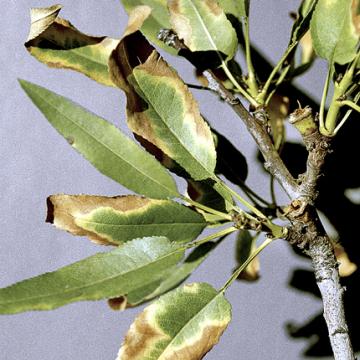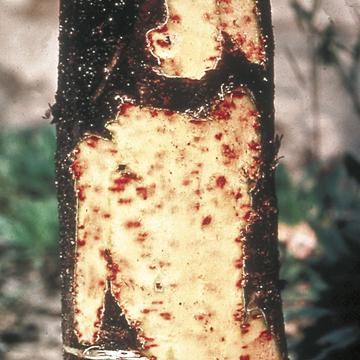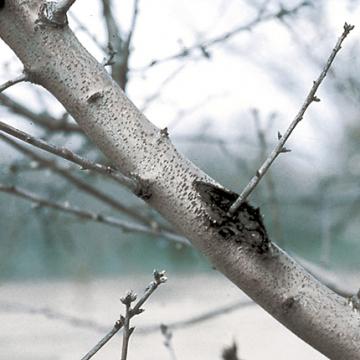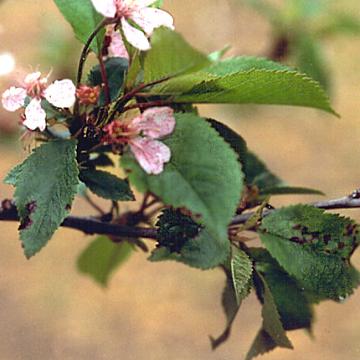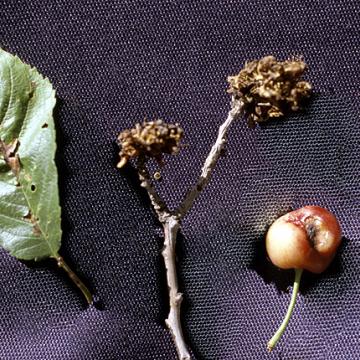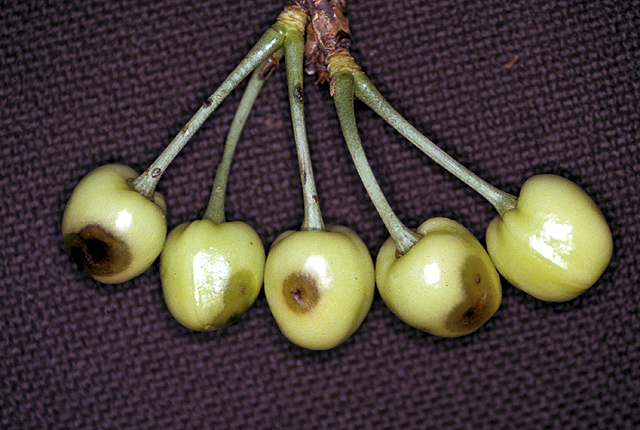DISEASE: Almond leaf scorch
HOST: Almond
Light brown necrotic (scorched) areas on curling leaves.
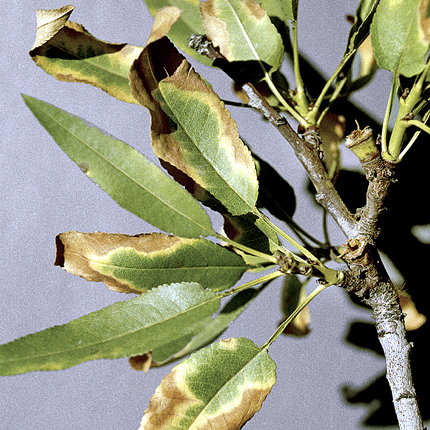
Almond leaf scorch | Almond
DISEASE: Almond leaf scorch
HOST: Almond (Prunus dulcis)
PATHOGEN: Xylella fastidiosa
SOURCE: W. Sinclair
DISEASE: Almond leaf scorch
HOST: Almond
Dying almond trees with scorched appearance. Initial symptoms are marginal chlorosis, usually late in the year. Scorch often is first noted at leaf tips, symptoms worsen, and terminal branches may die.
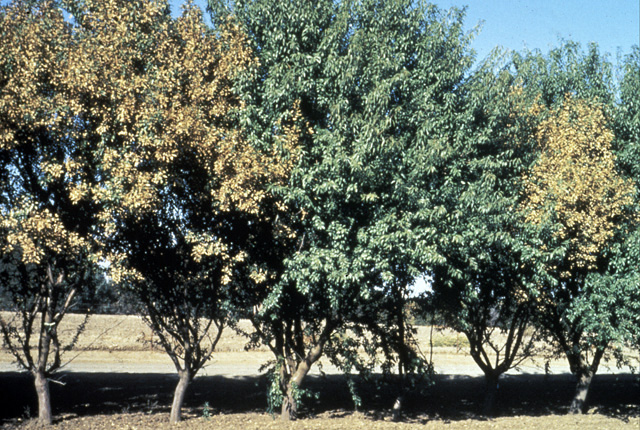
Almond leaf scorch | Almond
DISEASE: Almond leaf scorch
HOST: Almond (Prunus dulcis)
PATHOGEN: Xylella fastidiosa
SOURCE: R. Davis, M. Davis
DISEASE: Bacterial canker
HOST: Almond
Infected tissues with reddish necrotic spots, a key diagnostic symptom for the disease. Spots and streaks are commonly seen when bark is removed.
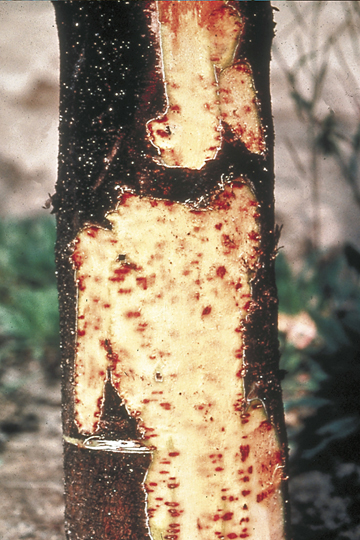
Bacterial canker | Almond
DISEASE: Bacterial canker
HOST: Almond (Prunus dulcis)
PATHOGEN: Pseudomonas syringae pv. syringae
SOURCE: B. Teviotdale
DISEASE: Bacterial canker
HOST: Almond
Diamond-shaped canker on infected limb. Such cankers are common on small limbs and spurs.
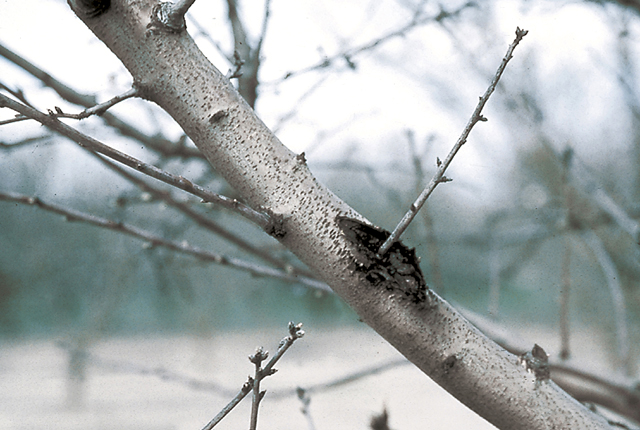
Bacterial canker | Almond
DISEASE: Bacterial canker
HOST: Almond (Prunus dulcis)
PATHOGEN: Pseudomonas syringae pv. syringae
SOURCE: B. Teviotdale
DISEASE: Bacterial canker
HOST: Cherry
Cherry with necrotic internal tissues and external symptoms of ooze (gummosis) caused by systemic infection.
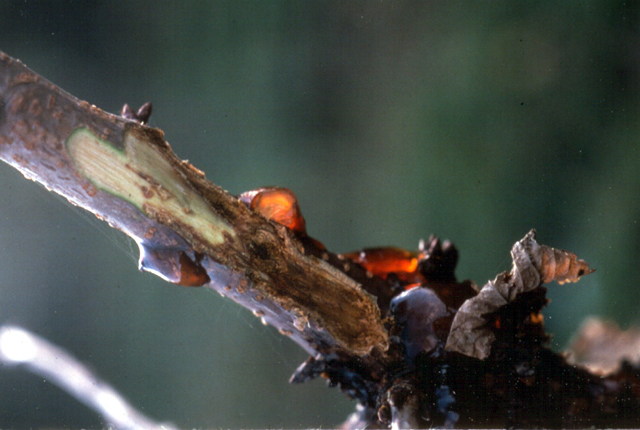
Bacterial canker | Cherry
DISEASE: Bacterial canker
HOST: Cherry (Prunus avium)
PATHOGEN: Pseudomonas syringae pv. morsprunorum
SOURCE: D. Funk, A. Alvarez
DISEASE: Bacterial canker
HOST: Cherry
Systemic infection of petioles and leaves.
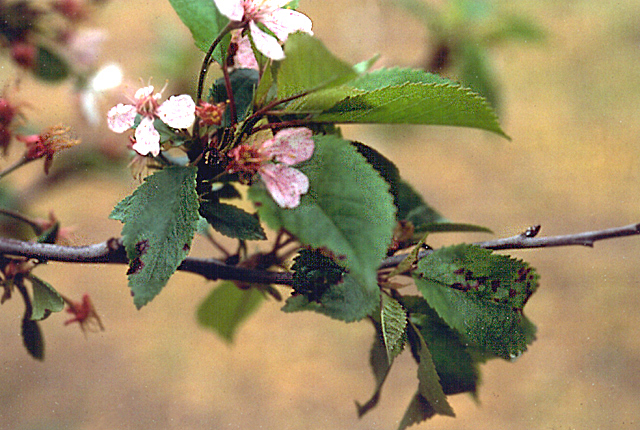
Bacterial canker | Cherry
DISEASE: Bacterial canker
HOST: Cherry (Prunus avium)
PATHOGEN: Pseudomonas syringae pv. morsprunorum
SOURCE: D. Funk, A. Alvarez
DISEASE: Bacterial canker
HOST: Cherry
Blast stage of canker disease affects flowers, buds, and leaves. Necrotic lesions on fruit may cause distortion.
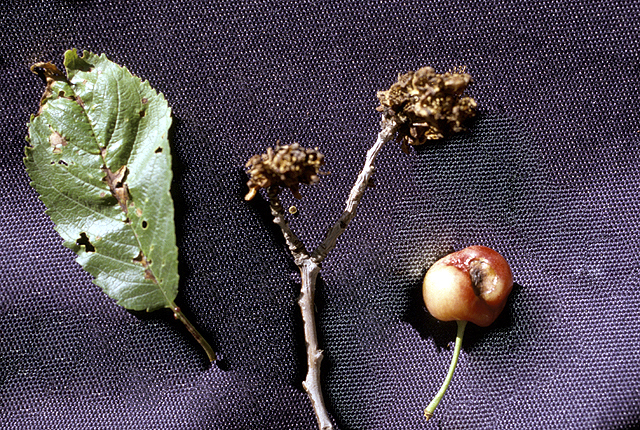
Bacterial canker | Cherry
DISEASE: Bacterial canker
HOST: Cherry (Prunus avium)
PATHOGEN: Pseudomonas syringae pv. syringae
SOURCE: S. Thomson
DISEASE: Bacterial canker
HOST: Cherry
Cherry petioles with dark necrotic lesions. Premature fruit drop is associated with the disease.

Bacterial canker | Cherry
DISEASE: Bacterial canker
HOST: Cherry (Prunus avium)
PATHOGEN: Pseudomonas syringae pv. syringae
SOURCE: S. Thomson


